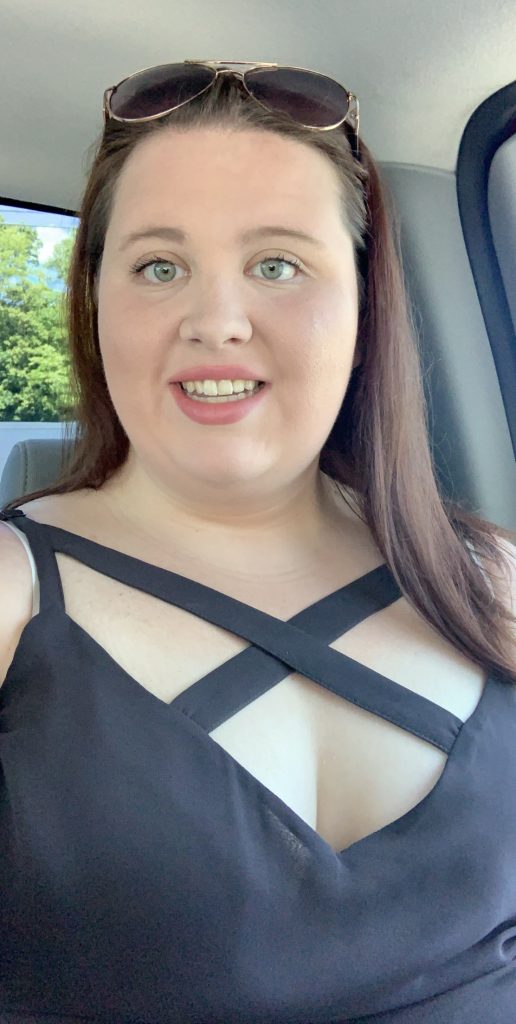Brianna’s Story
Although not all my days are great, I have come to see that help is there if I need it. I do not have to do this alone.
Brianna Searless
Living With A Mental Health Illness

Through open, judgment-free dialogue, we can remove the stigma of mental health. Brianna Searles is a Quell scholar, and a Quell Junior Board member.
THIS IS ME
In only 20 short years, I’ve gone through a lot. I’m a daughter, sister, and friend. But that isn’t the whole of me. I have only shown my alter ego. The happy me, the one my family would be proud of showing off. I wore a mask to make everyone think I was the happiest person ever, but on the inside, I wasn’t. It was the mask of the ideal me, the “me” I longed to be. The “me” I thought would make people love me. The “me” I wasn’t embarrassed about being. However, it wasn’t the real me.
shown my alter ego. The happy me, the one my family would be proud of showing off. I wore a mask to make everyone think I was the happiest person ever, but on the inside, I wasn’t. It was the mask of the ideal me, the “me” I longed to be. The “me” I thought would make people love me. The “me” I wasn’t embarrassed about being. However, it wasn’t the real me.
MY MASK
My masked covered more than just the real me; it covered scars, both physical and mental. It hid the tears and the makeup-stained faces. It protected the embarrassment and struggles. It kept me invisible and safe. My mask was formed young. When I was five, the bullying started, and my mask was created. Over the years, as the harassment added up, so did the details on the mask. I painted this pretty picture of who I wanted to be and who others wanted me to be. My mask was bright, like the one you would see at the beginning of spring. Flowers that just bloomed, bright yellow sunshine, and a new and fresh start. The mask was turning real. It was an everyday must. I felt like I would wake up, brush my teeth, and put on my mask. It was just another essential, like eating breakfast before going on with my day. As the days went on, everyone would comment, “you look so happy,” friends would want to hang out more, and I felt like my family wanted me to be around. But I was not happy, did not want to be with friends, and felt like a disgrace to my family. If only they saw me without my mask. I couldn’t stand the pain and guilt. They couldn’t see me without my mask. Then the dreaded day in 8th grade came.
I got a call from the office I would never forget. I saw the tears in my father’s eyes; no girl would ever want to know because I was the cause of those tears. It was heartbreaking, but no matter how tragic it was I couldn’t bear to think about lifting my mask. Next, the statement that haunted me came, “we need to talk, we’ve had someone that is concerned for you bring to our attention you have been feeling low and cutting yourself.” My dad’s face hit the floor. Embarrassment and anger rushed over me. How could someone who I trusted tell my guidance counselor? The hurt in my dad’s eyes made me mad. I remember thinking how can you be angry when you couldn’t even see that your daughter was struggling. Then I remembered my mask. How could they understand when I seemed like the happiest girl ever. I never gave them the chance to see, and I never allowed them to help me.
BEATING THE STIGMA
At that moment, I realized the mask could no longer define me. I wasn’t this girl behind a mask. I was a girl who needed help before I wound up dead. I realized no matter how hurt my parents were; they would be more hurt if they had to bury their daughter. That day in my middle school guidance office, my mask was torn off.
As a child and into middle school, I thought I was going to be another reason why the suicide rate was rising. I was going to be the girl who died by suicide. However, seven years later, I am writing my story. I beat the stigma. Although not all my days are great, I have come to see that help is there if I need it. I do not have to do this alone. Besides family, I have met wonderful people and groups that have helped me. Since my freshman year of college, I have been able to surround myself with caring people who share a common goal of ending the stigma. I am so glad I am here today, and I am not a statistic. I am a daughter, sister, and friend. But most importantly, I am a product of The Quell Foundation. I am a fighter. I am a survivor.
Back to stories